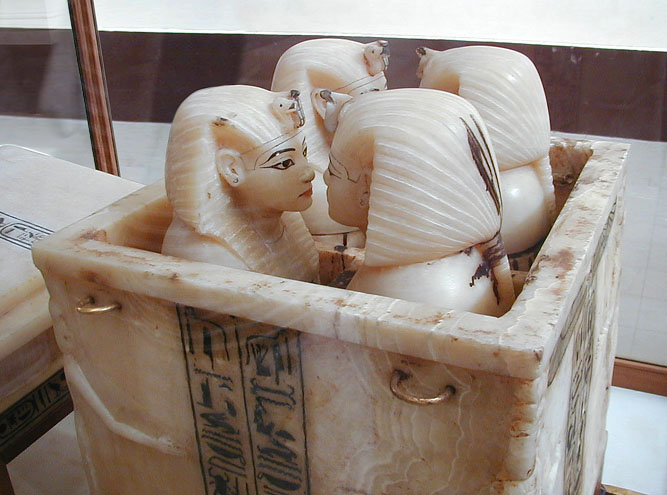Canopic chest on:
[Wikipedia]
[Google]
[Amazon]
 Canopic chests are cases used by ancient Egyptians to contain the internal organs removed during the process of
Canopic chests are cases used by ancient Egyptians to contain the internal organs removed during the process of
 Canopic chests had an important place in Egyptian culture. Canopic chests contained the internal organs (
Canopic chests had an important place in Egyptian culture. Canopic chests contained the internal organs (
 Canopic chests are cases used by ancient Egyptians to contain the internal organs removed during the process of
Canopic chests are cases used by ancient Egyptians to contain the internal organs removed during the process of mummification
A mummy is a dead human or an animal whose soft tissues and organs have been preserved by either intentional or accidental exposure to chemicals, extreme cold, very low humidity, or lack of air, so that the recovered body does not decay furt ...
. Once canopic jars began to be used in the late Fourth Dynasty, the jars were placed within canopic chests. Although the first proven canopic burials date from the Fourth Dynasty reign of Sneferu
Sneferu ( snfr-wj "He has perfected me", from ''Ḥr-nb-mꜣꜥt-snfr-wj'' "Horus, Lord of Maat, has perfected me", also read Snefru or Snofru), well known under his Hellenized name Soris ( grc-koi, Σῶρις by Manetho), was the founding phar ...
, there is evidence to suggest that there were canopic installations at Saqqara
Saqqara ( ar, سقارة, ), also spelled Sakkara or Saccara in English , is an Egyptian village in Giza Governorate, that contains ancient burial grounds of Egyptian royalty, serving as the necropolis for the ancient Egyptian capital, Memph ...
dating from the Second Dynasty.Dodson, Aidan, "Canopic Jars and Chests", in Redford, Donald B. (ed) (2001). ''The Oxford Encyclopedia of Ancient Egypt'', vol. II, Oxford University Press. pp. 231–235
Connections to Ancient Egyptian culture
viscera
In biology, an organ is a collection of tissues joined in a structural unit to serve a common function. In the hierarchy of life, an organ lies between tissue and an organ system. Tissues are formed from same type cells to act together in a f ...
) of mummies, so they relate to the Egyptian belief that the afterlife is just as important as life on earth. Egyptians believed that everything had to be perfectly preserved to journey into the land after life and as part of the mummification process they removed viscera from the body.
Changes through history
The first canopic chests were simple and wooden, but as time went on they became more elaborate. Then, around the 21st Dynasty (1069–945 BCE), the Egyptians decided to leave the viscera inside mummies. But because they had been using canopic chests for thousands of years they kept putting them in tombs, just without anything in them. Canopic chests fell out of use during the Ptolemaic Kingdom.Style and materials
The style and materials were different at different times, though always reflected the Egyptian ideal of perfectly measured and precise beauty.Ptolemaic period
The tall wooden shrine-like chests had bright painting on their sides and a falcon crouching on top. Craftsmen coated the wood withgesso
Gesso (; "chalk", from the la, gypsum, from el, γύψος) is a white paint mixture consisting of a binder mixed with chalk, gypsum, pigment, or any combination of these. It is used in painting as a preparation for any number of substrates suc ...
to prepare it for the pigment they later painted it with. All the decoration tells us something about ancient Egyptian religion
Ancient Egyptian religion was a complex system of polytheistic beliefs and rituals that formed an integral part of ancient Egyptian culture. It centered on the Egyptians' interactions with many deities believed to be present in, and in contro ...
. The falcon on top represents Sokar, a funerary god and picture on the sides show the chest’s owner worshipping Osiris
Osiris (, from Egyptian ''wsjr'', cop, ⲟⲩⲥⲓⲣⲉ , ; Phoenician: 𐤀𐤎𐤓, romanized: ʾsr) is the god of fertility, agriculture, the afterlife, the dead, resurrection, life, and vegetation in ancient Egyptian religion. He wa ...
, god of the afterlife; Ra-Horakhty, a combination of the gods Horus
Horus or Heru, Hor, Har in Ancient Egyptian, is one of the most significant ancient Egyptian deities who served many functions, most notably as god of kingship and the sky. He was worshipped from at least the late prehistoric Egypt until the ...
and Ra; four sons of Horus, each of whom guards one of the viscera traditional removed during mummification; the dyed pillar, which represents Osiris, and the tyet
The tyet ( egy, tjt), sometimes called the knot of Isis or girdle of Isis, is an ancient Egyptian symbol that came to be connected with the goddess Isis. Its hieroglyphic depiction is catalogued as V39 in Gardiner's sign list.
In many respect ...
, which represents Isis
Isis (; ''Ēse''; ; Meroitic: ''Wos'' 'a''or ''Wusa''; Phoenician: 𐤀𐤎, romanized: ʾs) was a major goddess in ancient Egyptian religion whose worship spread throughout the Greco-Roman world. Isis was first mentioned in the Old Kin ...
. The painting is not as perfectly measured and precise as earlier Egyptian art, because Egyptian civilization was decaying when it was made.
References
Bibliography
* * *External links
{{DEFAULTSORT:Canopic Chest Canopic chests Egyptian artefact types